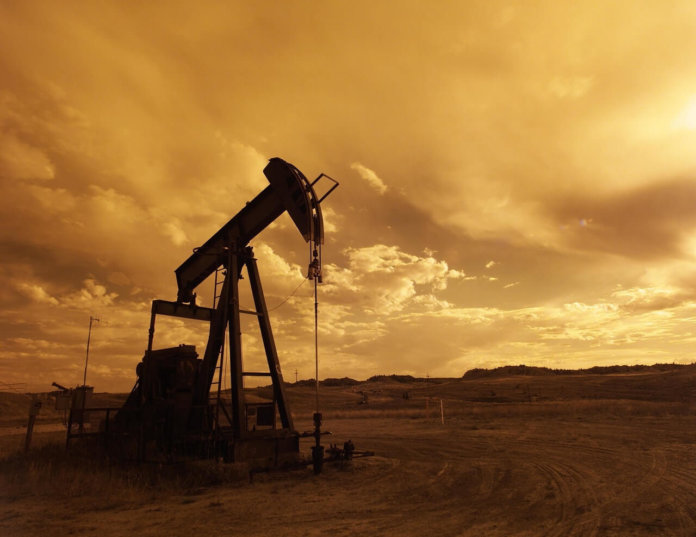
The global oil and gas industry continues to be battered by one of the worst downturns in 30 years, as the perfect storm of overproduction and geopolitical tensions have seen oil prices plunge. In fact, every company on our 2018 list of the largest oil and gas companies in the world saw their revenue totals decrease compared to two years ago.
However, the fact remains that the industry has produced some of the largest companies in known history. Here are the top 10 as of 2017 reporting.
10. Reliance Industries
Revenue: $42.2 billion
Country of Origin: India
Founded: 1966
Employees: 23,853
Reliance Industries is a Mumbai-based company founded by Dhirubhai Hirachand Ambani in 1966. Reliance owns subsidiaries in a number of different sectors including petroleum, natural gas, petrochemicals, textiles, retail, telecommunications, and media.
Reliance is the largest publicly traded company in India when measured by market capitalization. In October 2017, Reliance became the first Indian company to reach the $100 billion market cap milepost. Their dominance within India’s industrial sector is underscored by the fact that they are India’s largest exporter, accounting for 8 percent of the country’s total merchandise exports. The company has $91.54 billion in assets.
9. Rosneft
Revenue: $80.8 billion
Country of Origin: Russia
Founded: 1993
Employees: 48,000
Rosneft is a Russian oil and gas company that owns the title of the world’s largest publicly traded petroleum company, as well as Russia’s petroleum industry leader.
Rosnefts’s areas of focus include prospecting and exploration, production and oil refining. The company has a truly global reach, with assets and interests in Venezuela, Norway, Germany, Mongolia, Kyrgyzstan, China , and Myanmar, amongst others. Their refining and production operation includes 13 large refineries, three petrochemical plants and four gas processing plants across Russia.
Despite the global downturn in oil prices over the past two years, Rosneft boasts steady growth of economically recoverable hydrocarbon reserves, a point that distinguishes them from their competitors. In total, the company has more than $139 billion in assets.
8. OJSC Lukoil
Revenue: $90.4 billion
Country of Origin: Russia
Founded: 1991
Employees: 110,000
Lukoil was formed when three Russian state-run west Siberian companies, Langepasneftegaz, Urayneftegaz, and Kogalymneftegaz, merged in 1991. Prior to Lukoil’s formation, the three companies performed exploration, refining, and distribution separately. However, President Vagit Alekperov believed the only way for the post-Soviet Russian firms to succeed against their Western competitors would be to copy their business models, causing him to bring the three branches together.
Today, Lukoil is one of a few large private oil companies based in Russia. In terms of proven oil and gas reserves, it is second only to ExxonMobil and controls 1.3 percent of the global reserves. It has $69 billion in assets and has spent more than $1.4 billion on exploration.
7. Gazprom
Revenue: $102.1 billion
Country of Origin: Russia
Founded: 1989
Employees: 449,000
Gazprom is the third Russian company to make the list and the largest from that country. They are primarily focused on geological exploration and production of natural gas, although they also have interests in transportation, storage, processing and sales of gas, as well as generation and marketing of heat and electric power.
Gazprom is the world leader in natural gas reserves, with 72 percent of Russia’s total reserves and 17 percent globally. They are looking to expand in this area with significant gas exploration and development projects in the Yamal Peninsula, the Arctic shelf, Eastern Siberia and the Russian Far East, as well as a number of hydrocarbon exploration and production projects around the world.
As Russia’s largest producer and exporter of liquefied natural gas, Gazprom is well-positioned for the future in the rapidly expanding global LNG market. The company currently stands with assets worth $250.24 billion.
6. Chevron
Revenue: $129.9 billion
Country of Origin: USA
Founded: 1906
Employees: 61,000
Chevron’s history dates back to 1879 when it was founded as the Pacific Coast Oil Company. Although Standard Oil bought out the company in 1900, its breakup saw it reborn as Standard Oil Co. of California. It secured a 50-year concession with Saudi Aramco. In 1984, the company merged with Gulf Oil in what was the largest merger in history at that time, and Chevron Corporation was born.
During the mid-1940s to the 1970s, Chevron was one of the Seven Sisters, a collection of seven global oil companies that completely dominated the global petroleum industry. Today, Chevron has developed interests in alternative energy sources, and it claims to be the world’s largest producer of geothermal energy.
In 2018, Chevron took a significant step into the world of e-commerce with a formal partnership with PayPal. The deal means drivers will be able to pay for fuel through PayPal as early as 2019.
5. Total S.A.
Revenue: $143 billion
Country of Origin: France
Founded: 1924
Employees: 96,000
Total S.A. was formed shortly after World War I when the French Prime Minister refused a joint venture with Royal Dutch Shell and created the country’s own firm. It was known at the time as Compagnie Française des Pétroles. In 1985, it was renamed Total-CFP and then Total in 1991. At its inception, the company benefitted from a 25 percent share of the Turkish Petroleum Company that France received from Germany as reparations for WWI.
Total has ventured into alternative energy beginning with its foray into solar in 1975, followed by nuclear energy in 2011. Total SA ranked 28th on the 2018 Fortune Global 500 list.
4. ExxonMobil
Revenue: $236.8 billion
Country of Origin: USA
Founded: 1999
Employees: 75,000
ExxonMobil is the result of a merger of two companies that were the remnants of John D. Rockefeller’s Standard Oil Company. The two New Jersey and New York companies, known later as Exxon and Mobil respectively, were giants in their own right. The merger created the largest company in US corporate history.
ExxonMobil comprises of three brands, Exxon, Mobil , and Esso, with each brand servicing different countries throughout the world. ExxonMobil is considered the largest of the giants known as Big Oil, a group of seven or eight of the world’s largest oil and gas companies.
3. Royal Dutch Shell
Revenue: $264.1 billion
Country of Origin: UK/Netherlands
Founded: 1907
Employees: 93,000
The company we know today as Royal Dutch Shell was founded in the 19th century. At the time, it was known simply as Shell, through which Londoner Marcus Samuel imported shells from the East. Shell was later passed on to brothers Marcus Jr. and Sam Samuel. Marcus Jr. developed an interest in the oil-exporting business. The company was renamed Shell Transport and Trading Company in 1897 before merging with Royal Dutch Petroleum to become Royal Dutch Shell Group in 1907.
Within 20 years, Royal Dutch Shell became the leading oil company in the world. The company restructured itself in 2005 when it dissolved the original partnership of Shell Transport and Royal Dutch Petroleum to officially unify the two as Royal Dutch Shell plc. The company has ranked in the top 10 of the Fortune Global 500 list for most the last 20 years.
In 2015, the company invested in the future by committing $1.1 billion to research and development. They currently hold more than $340 billion in assets.
2. China National Petroleum Corp. (PetroChina)
Revenue: $274.6 billion
Country of Origin: China
Founded: 1988
Employees: 851,000
CNPC is the government-owned parent company of publicly listed PetroChina and is the largest integrated energy company in China. The company can trace its beginnings to the communist revolution. It was developed as the petrol arm of the newly created “Fuel Industry Ministry”.
Today, the company operates in four segments: exploration and production, refining and chemicals, marketing and natural gas and pipeline. It is China’s biggest oil producer, and PetroChina is known as the most profitable company in Asia.
In 2018, PetroChina signed significant LNG deals with Qatar and Canada.
1. Sinopec
Revenue: $283.6 billion
Country of Origin: China
Founded: 2000
Employees: 78,000
Sinopec Limited, also referred to as China Petroleum & Chemical Corporation Limited, is a major subsidiary of the China Petrochemical Corporation, also known as Sinopec Group. The company is recognized as the largest annual oil refiner in all of Asia, despite only producing a quarter of the crude oil output of its rival PetroChina.
In just 15 years, Sinopec has partnered with or acquired a large number of oil and gas companies all over the world, consolidating its rise to become the largest oil and gas company as it provides fuel for a rapidly growing Chinese economy. In 2009, Sinopec was ranked 9th on the Fortune Global 500 list – the first ever Chinese corporation to be included in the top 10. It has risen higher on the list every year since rising to number two in 2015.
In a move to enhance their clean energy efforts, the company announced an increased investment into geothermal heating in Xiongan, Hebei in September 2018.









